II - Aerodynamic Development #
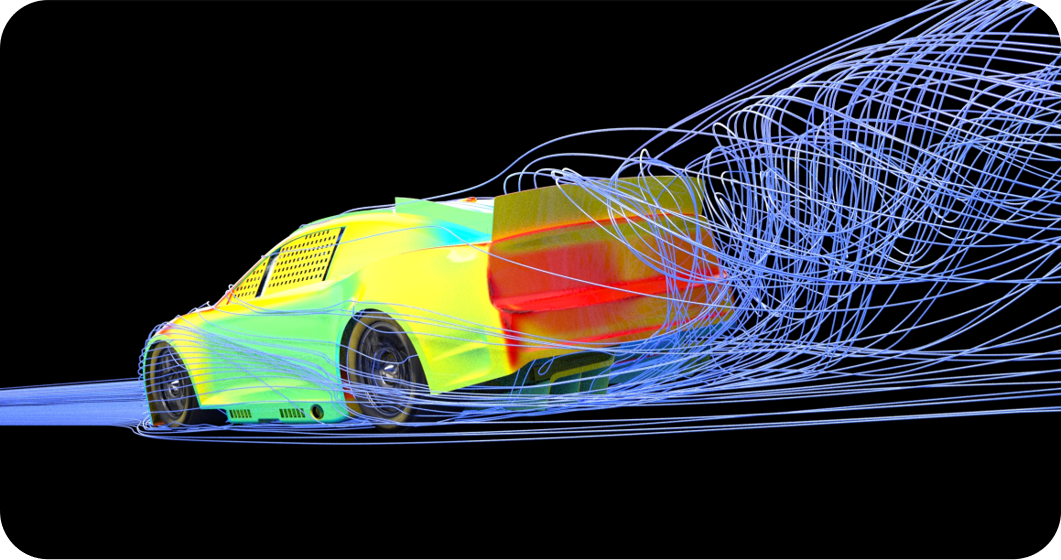
Output of CFD, showing streamlines around the Generation 7 NASCAR CUP car. Photo Courtesy of Chevrolet Racing.
For sake of respecting existing confidentially agreements, the topics below are discussed broadly and without revealing any I.P.
Introductory Thoughts #
With speeds often in excess of 200mph, aerodynamics are easily the most dominant parameter towards performance in NASCAR. Off the track, the aerodynamicists at the teams are locked into an intense arms race of their own, evolving the cars from race to race, striving to outpace the competition with their rate of development.
Outerbody Aerodynamics #
In the eyes of an aerodynamicist, the car is split into two regimes: outerbody, and underbody.
Regarding the outerbody, NASCAR requires the cars to closely resemble their road going counterparts. To allow for manufacturing tolerances, the rules offer narrow margins within which a team can deviate from the intended shape of the vehicle. However, the more precise the manufacturing, the more the extents of the tolerances can be use to improve aerodynamic performance.
While each individual changes is small, the stack up of performance offered by the hundreds of minute improvements compound to result in laptimes that are seconds a lap faster than the undeveloped cars.
The aerodynamic performance of a CUP car is largely driven by the spoiler. For grip limited tracks, downforce production is important, and is largely a function of increasing spoiler load. As such, reducing flow losses is important. Conversely, power limited tracks necessitate minimum drag. This means increasing flow losses and decreasing spoiler load.
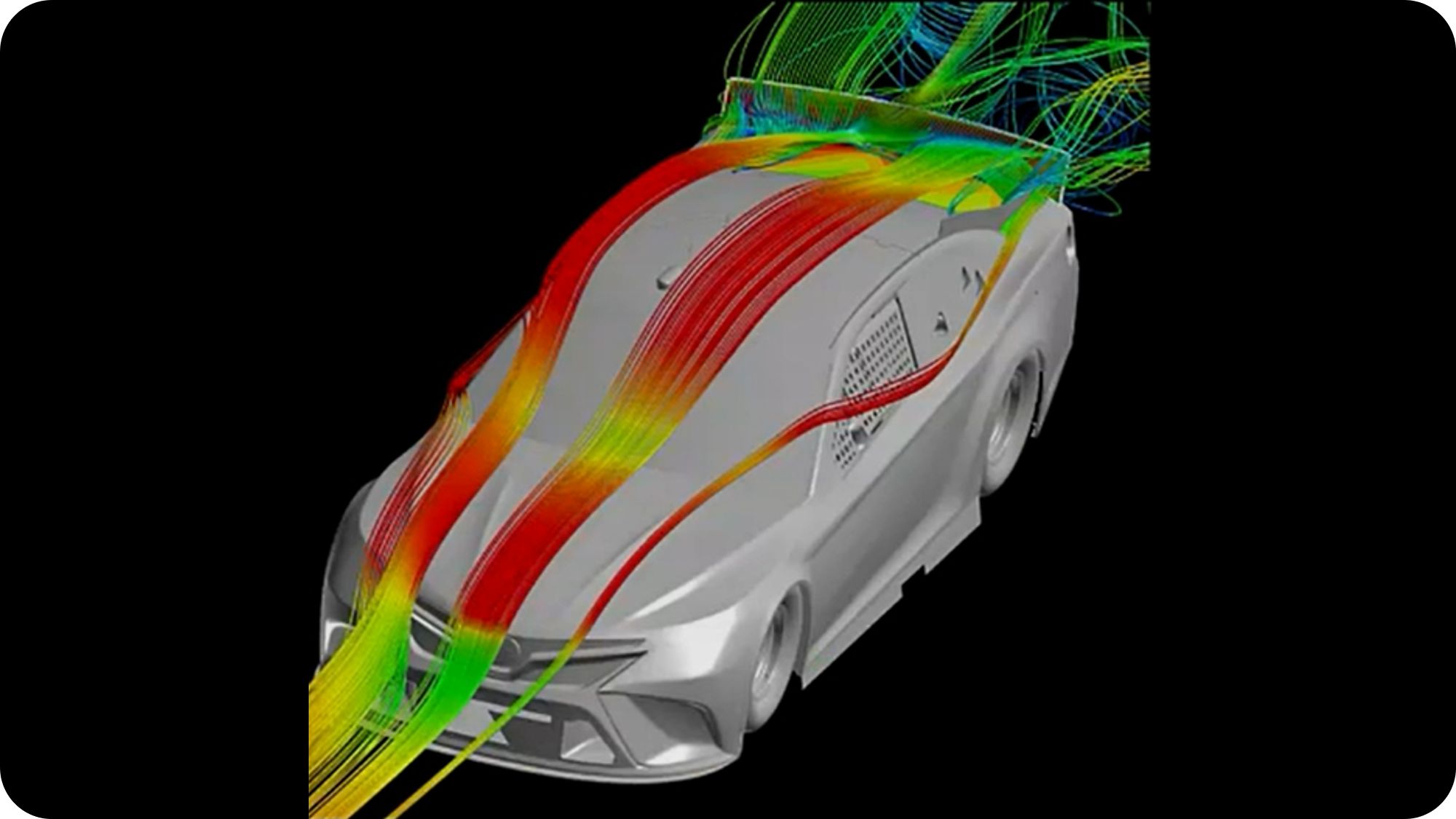
Seeding streamlines over the roof. Photo courtesy of Joe Gibbs Racing.
NASCAR mandates different aero packages for different styles of track. Different splitter and spoiler sizes significantly change the flowfield around the car, and entail different development choices.
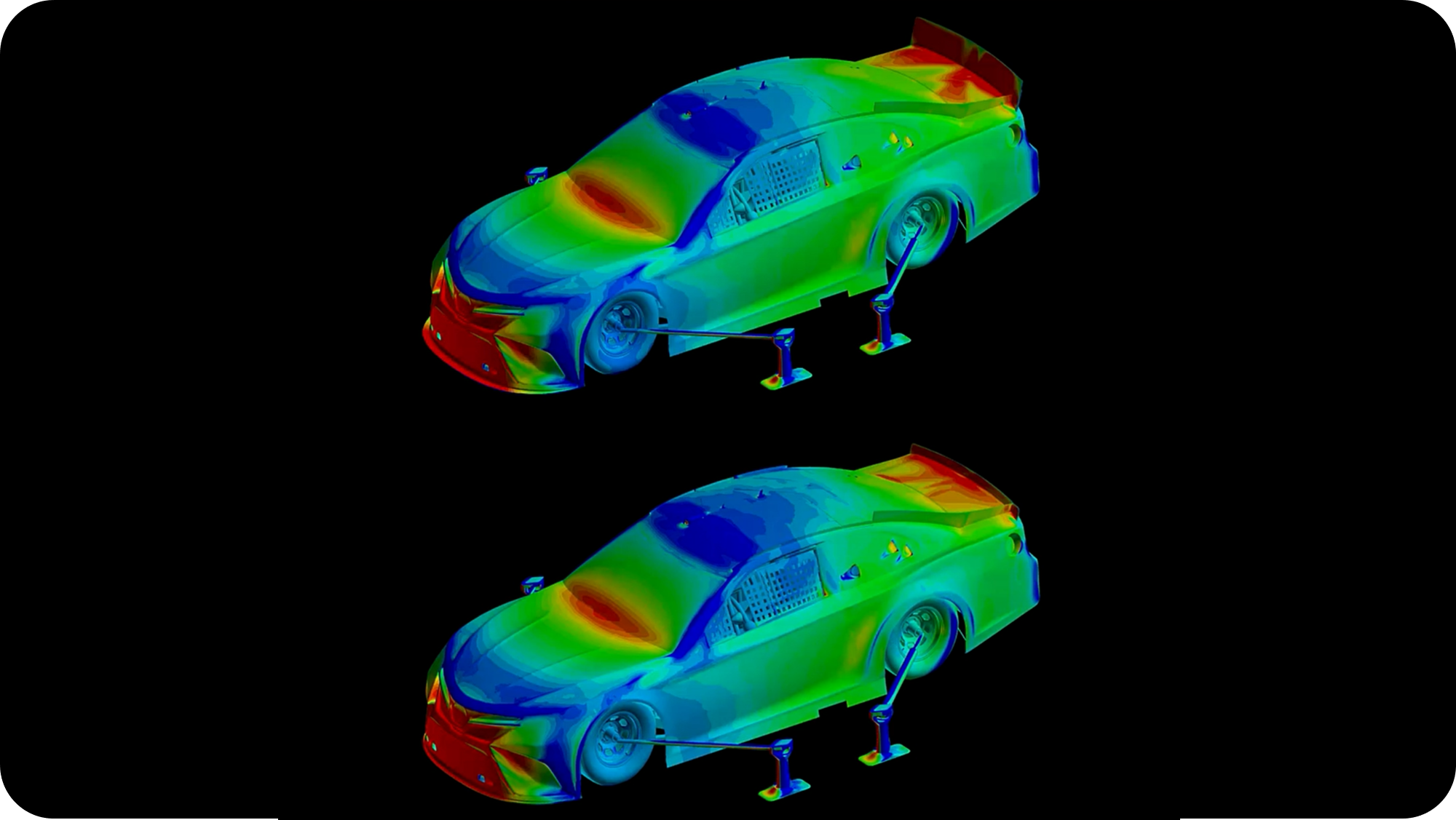
The INT and ST packages in CFD. Photo courtesy of Joe Gibbs Racing.
Underbody Aerodynamics #
The underbody contributes massively to the performance of a NASCAR CUP car, but the flowfield is complex. On one hand, it’s beneficial to seal the car to the ground at the front and sides, creating a low pressure cavity that sucks the car to the track surface. However, additional performance is available from strategically allowing some flow to enter the underbody and act on aero surfaces. However, it’s important to precisely control the trajectory of this flow and prevent it from adversely effecting the underbody.
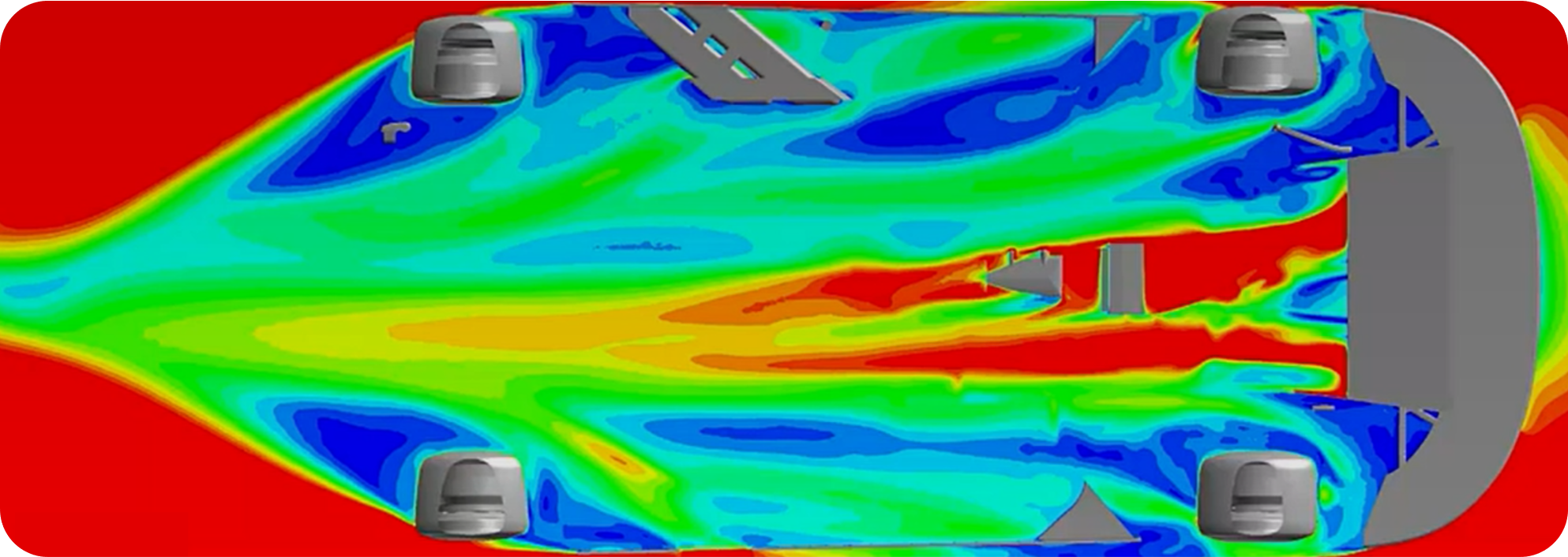
Path of the “center jet”. Photo courtesy of Joe Gibbs Racing.
As such, any component that the air touches is highly optimized by the aerodynamicists, from the chassis, suspension, even the powertrain components. It’s important for the aerodynamicists to reconcile trade offs between what they want, and the needs of the other subteams to build the best overall car. Fortunately, the scales almost always tip in favor of the aerodynamicists.
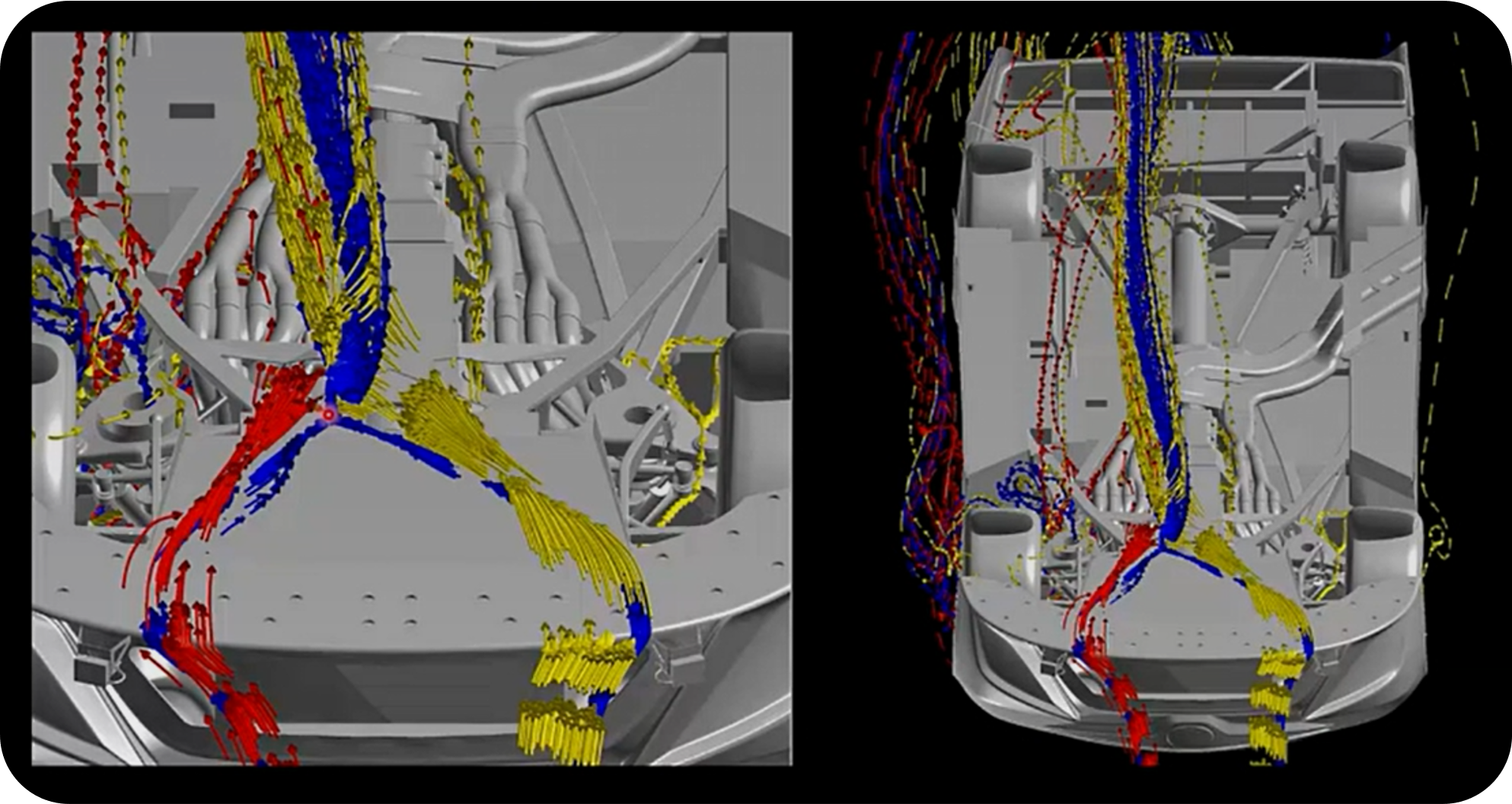
Seeding streamlines into the underbody. Photo courtesy of Joe Gibbs Racing.
Generation 7 #
The Generation 7 car CUP car, due to be introduced in 2022, represents a paradigm shift in the sport. Technologically, it is the largest such shift in the series in 50 years. With a full composite floor and body, the cars aerodynamics are entirely different to its predecessors. This necessitates a complex undertaking for the aerodynamics group, as decades of knowledge needs to be thrown out, and a brand new notebook of sensitivities assembled.
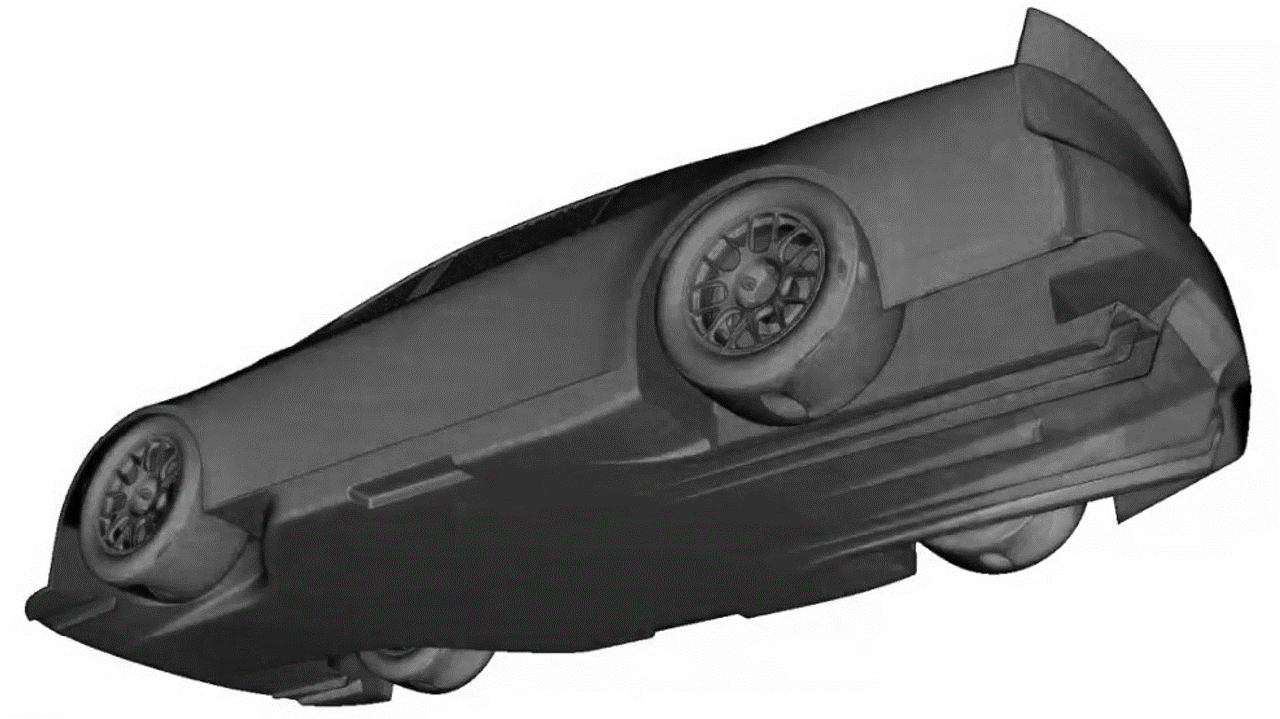
Generation 7 Underbody. Photo taken from this presentation.
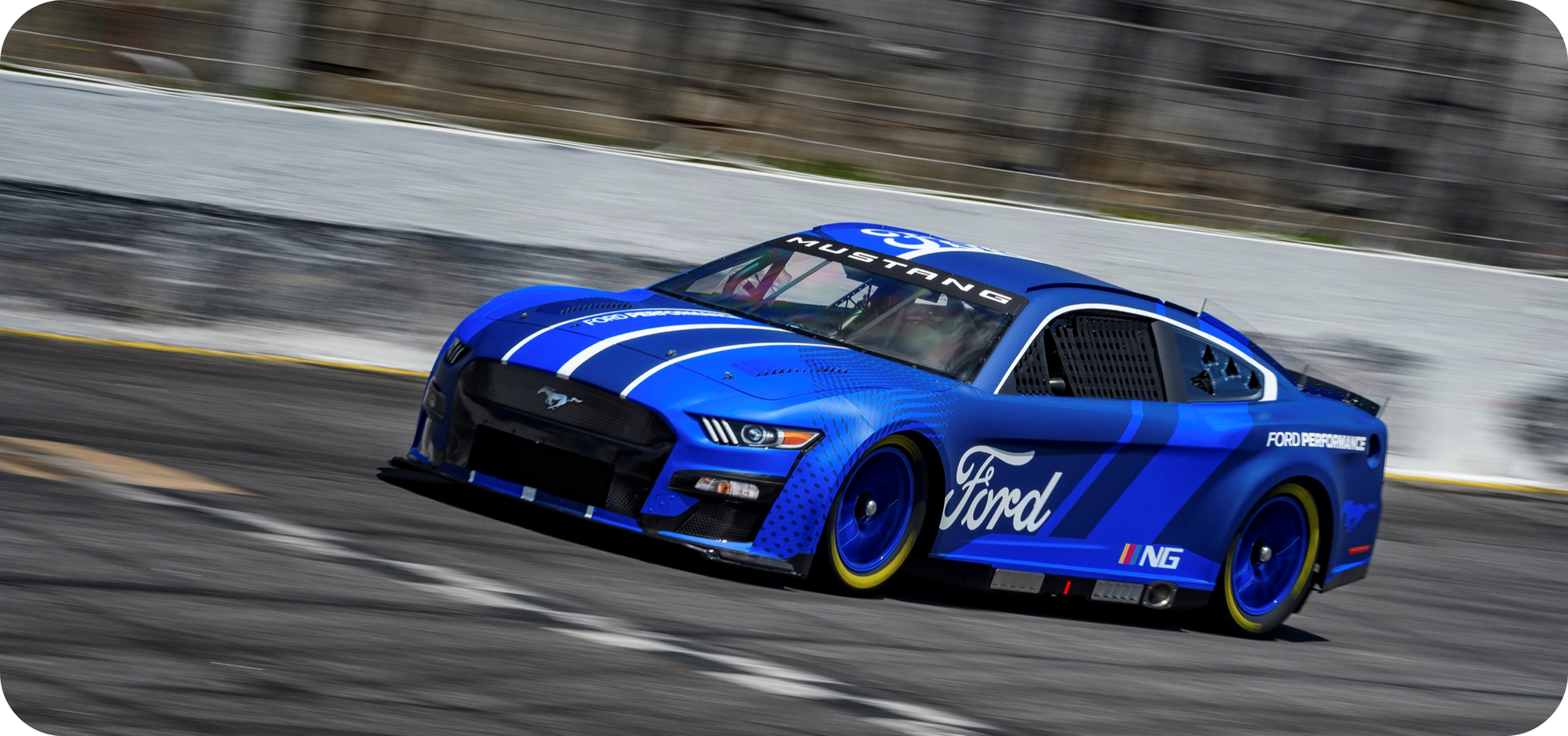
2022 CUP Mustang.
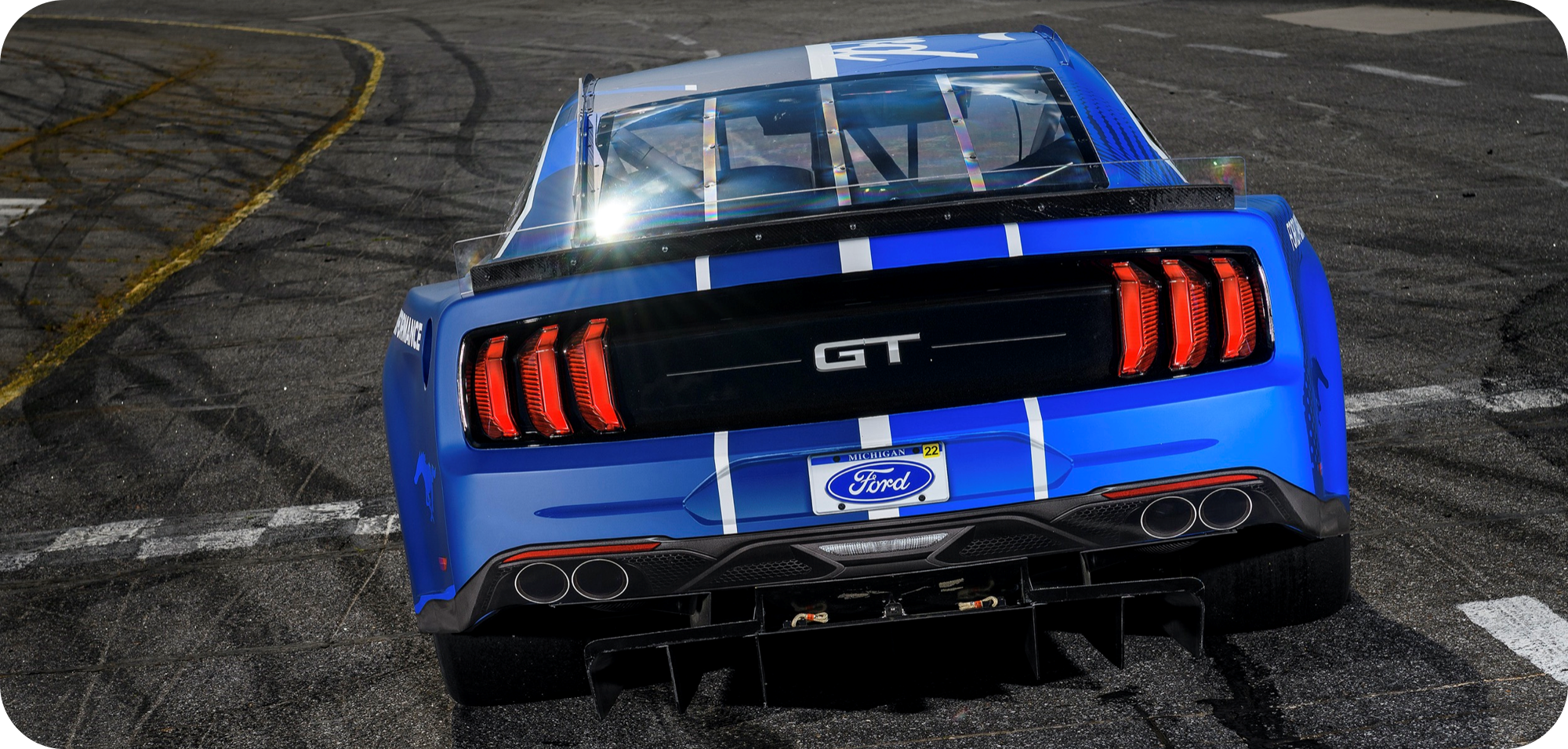
2022 CUP Mustang.
Concluding Thoughts #
No individual performance item wins a team a race. Rather, it’s culmination of all of the processes, development, and effort off the track that gives the team an advantage on the track.